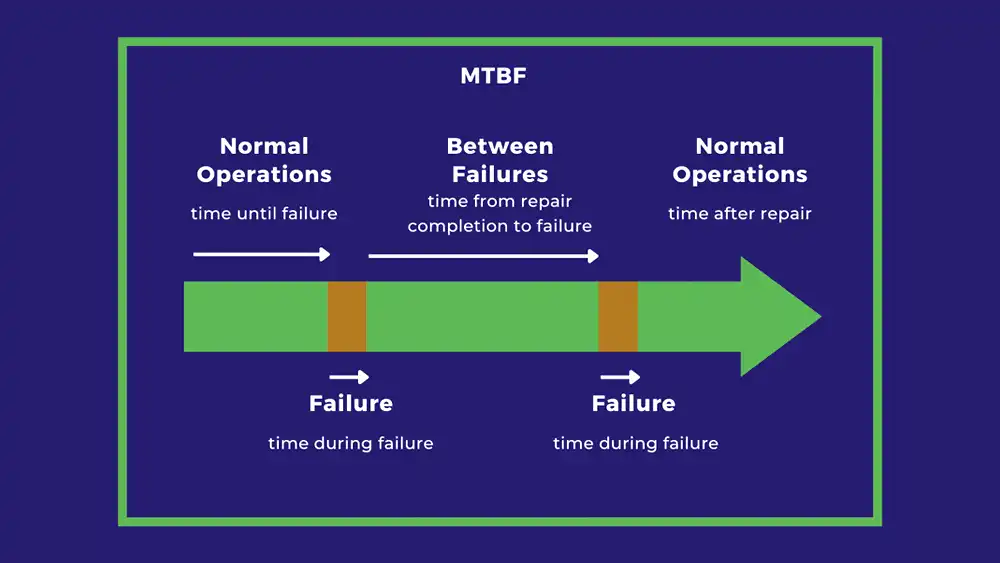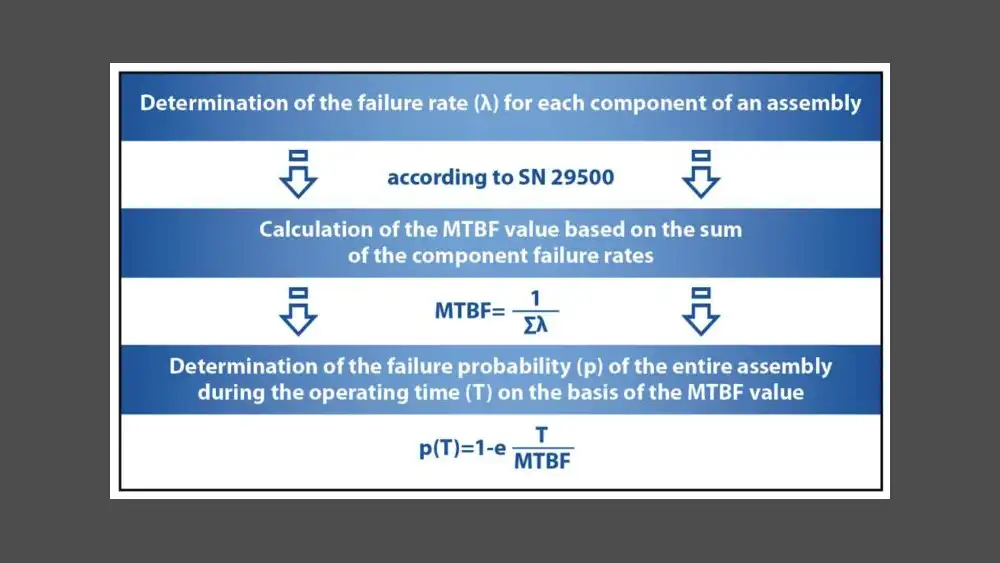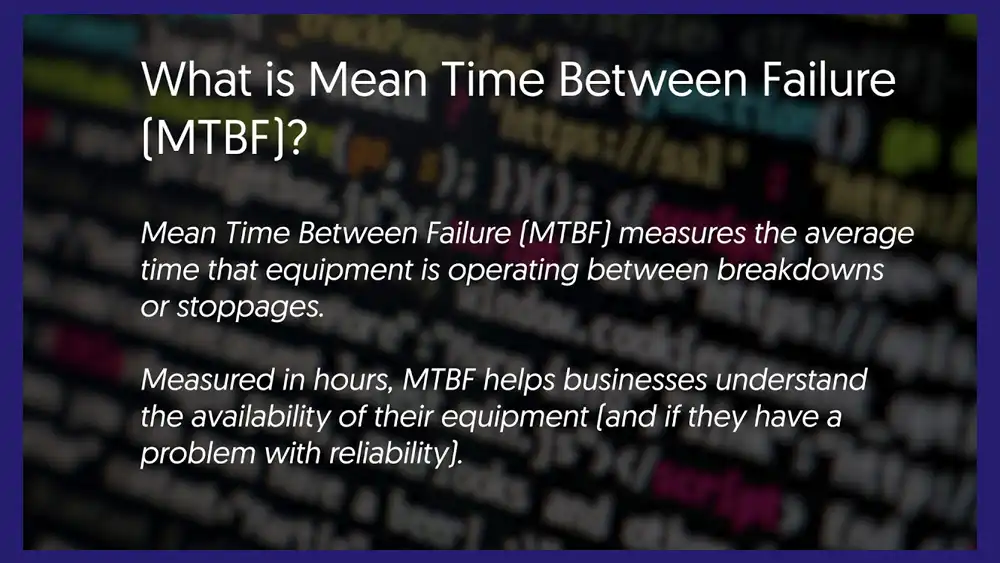Welcome to the comprehensive guide on mastering reliability analysis for electronic components. Understanding Mean Time Between Failures (MTBF) is crucial for ensuring the reliability and longevity of electronic systems. In this guide, we’ll delve into the intricacies of calculating MTBF for electronic components, providing expert tips and insights to help you navigate this essential aspect of electronics engineering.
What Is MTBF?

Mean Time Between Failures (MTBF) is a crucial metric used in reliability engineering to estimate the expected time between failures of a system, specifically electronic components in this context. It provides valuable insights into the reliability and durability of electronic devices.
MTBF Calculation for Electronic Components

Mean Time Between Failures (MTBF) is a crucial metric in reliability engineering, especially for electronic components.
Here, we’ll walk through the process of calculating MTBF for electronic components step by step.
Data Collection: The first step in MTBF calculation is gathering relevant data. This includes recording the operating hours of the electronic component and noting any instances of failure.
MTBF Formula: The capacitor formula for calculating MTBF is straightforward:
MTBF = Total Operating Time / Number of Failures
Example Calculation: Let’s consider an electronic component that operates for 10,000 hours and experiences 5 failures during this time period.
MTBF = 10,000 hours / 5 failures MTBF = 2,000 hours
This means that, on average, the component can be expected to operate for 2,000 hours before encountering a failure.
Factors Influencing MTBF: Several factors can influence the MTBF of electronic components:
- Component Quality: Higher quality components tend to have longer MTBF values.
- Environmental Conditions: Harsh environments can decrease MTBF due to increased stress on components.
- Operating Conditions: Factors like temperature, voltage, and current can impact MTBF.
- Maintenance Practices: Regular maintenance can prolong MTBF by addressing potential failure points proactively.
By understanding these factors and following the steps outlined above, you can accurately calculate the MTBF for electronic components, helping to ensure the reliability and longevity of electronic systems.
Importance of MTBF in Electronics
MTBF serves as a vital parameter in the design, maintenance, and evaluation of electronic systems. By accurately calculating MTBF, engineers can identify potential weaknesses in their designs, optimize maintenance schedules, and enhance overall system reliability.
MTBF analysis plays a significant role during the product development phase, helping engineers identify potential failure points and design robust, reliable electronic systems.
MTBF Calculation

Mastering the calculation of MTBF is essential for engineers and reliability analysts. Let’s explore the step-by-step process of calculating MTBF for electronic components.
Data Collection
The first step in calculating MTBF involves gathering relevant data pertaining to the performance and failure of electronic components. This data may include failure timestamps, operating hours, and environmental conditions.
MTBF Formula
The MTBF formula is relatively straightforward:
MTBF = Total Operating Time / Number of Failures
Example Calculation
Consider an electronic system that operates for 10,000 hours with 5 recorded failures. Using the MTBF formula:
MTBF = 10,000 hours / 5 failures MTBF = 2,000 hours
This indicates that, on average, the system can be expected to operate for 2,000 hours before encountering a failure.
Factors Influencing MTBF
Several factors can influence the MTBF of electronic components, including:
- Component Quality: Higher quality components typically have longer MTBF values.
- Environmental Conditions: Harsh operating environments may decrease MTBF due to increased stress on components.
- Operating Conditions: Factors such as temperature, voltage, and current can impact MTBF.
- Maintenance Practices: Regular maintenance can prolong MTBF by addressing potential failure points before they occur.
Tips for Improving MTBF
Improving Mean Time Between Failures (MTBF) is essential for enhancing the reliability and longevity of electronic components. Here are some practical tips to boost MTBF:
1. Choose High-Quality Components
Invest in electronic components from reputable electronic component manufacturers known for their quality and reliability. High-quality components are less prone to failures, leading to longer MTBF values.
2. Implement Redundancy
Introduce redundancy in critical system components to minimize the impact of failures. Redundant components serve as backups, ensuring continuous operation even if one component fails, thus increasing overall reliability and MTBF.
3. Optimize Maintenance Procedures
Develop proactive maintenance procedures to identify and address potential failure points before they impact system operation. Regular inspections, testing, and preventive maintenance can significantly prolong the life of electronic components and improve MTBF.
4. Monitor Environmental Conditions
Monitor and control environmental conditions such as temperature, humidity, and vibration levels. Harsh operating environments can accelerate component degradation and increase the likelihood of failures, leading to shorter MTBF values.
5. Analyze Failure Data
Collect and analyze data on component failures to identify patterns and root causes. Understanding the factors contributing to failures allows for targeted improvements in design, manufacturing, and maintenance practices, ultimately leading to higher MTBF values.
6. Invest in Training and Education
Provide training and education to personnel involved in the design, installation, and maintenance of electronic systems. Well-trained staff can implement best practices, troubleshoot issues effectively, and contribute to improving overall system reliability and MTBF.
By implementing these tips, you can effectively improve the MTBF of electronic components, ensuring greater reliability and longevity for your systems.
Select High-Quality Components
Invest in components from reputable manufacturers known for their quality and reliability. High-quality components often have longer MTBF values, contributing to overall system reliability.
Implement Redundancy
Introducing redundancy in critical system components can mitigate the impact of failures and increase overall reliability. Redundant components serve as backups, ensuring continuous operation even in the event of a failure.
Optimize Maintenance Procedures
Developing proactive maintenance procedures can significantly improve MTBF by identifying and addressing potential failure points before they impact system operation. Regular inspections, testing, and preventive maintenance can help prolong the life of electronic components.
FAQs
Can MTBF be used to predict the lifespan of electronic components?
Yes, MTBF provides an estimate of the expected time between failures, which can be used to predict the lifespan of electronic components.
Is MTBF the only metric used for reliability analysis?
No, MTBF is just one of several metrics used in reliability analysis. Other metrics include Mean Time to Failure (MTTF) and Mean Time to Repair (MTTR).
How does temperature affect MTBF?
Higher temperatures can accelerate component degradation and increase the likelihood of failures, leading to shorter MTBF values.
Can MTBF be improved through design optimization?
Yes, optimizing the design of electronic systems can enhance MTBF by minimizing stress on components and improving overall reliability.
Are there industry standards for MTBF calculations?
Yes, several industry standards provide guidelines for MTBF calculations, including MIL-HDBK-217F and Telcordia SR-332.
What role does predictive maintenance play in improving MTBF?
Predictive maintenance leverages data and analytics to anticipate potential failures and schedule maintenance activities proactively, thereby improving MTBF.
Conclusion
Mastering the calculation of MTBF for electronic components is essential for ensuring the reliability and longevity of electronic systems. By following the expert tips and insights provided in this guide, you can effectively navigate the complexities of reliability analysis and optimize the performance of your electronic devices.